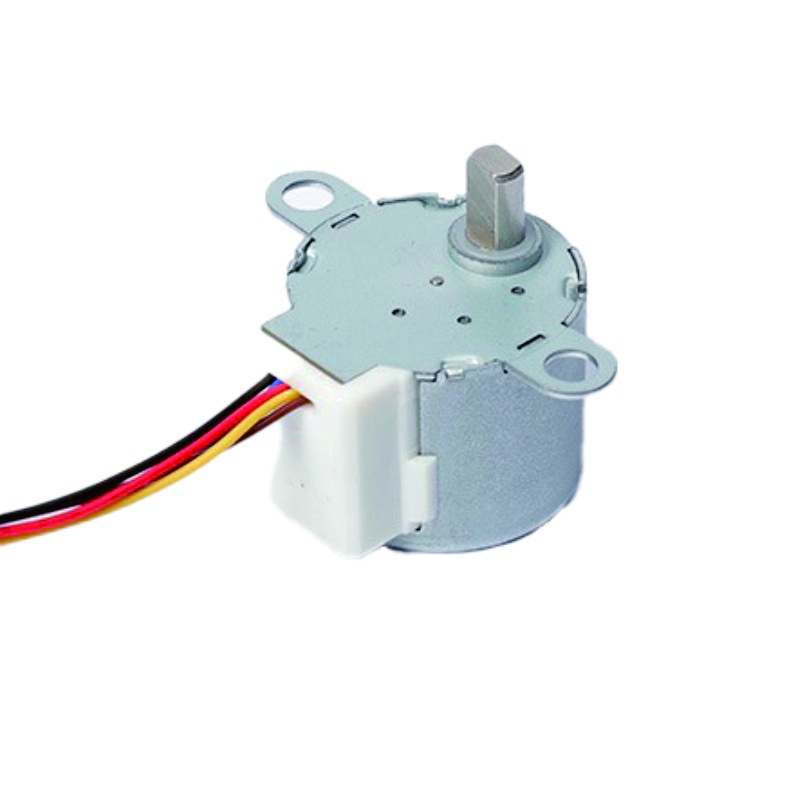In industrial automation, robotics, and precision equipment, 24V step motors offer significant advantages over 12V models in power output, stability, and system compatibility, especially in medium-to-high-load and complex working conditions.
24V step motors can carry larger currents due to their winding design (higher voltage increases current at the same resistance), generating stronger electromagnetic driving force. For example, in material handling robots or CNC machines, the torque output of 24V motors can be 30%-50% higher than 12V models, easily driving heavy mechanical arms or workpieces and reducing stagnation or precision errors caused by insufficient power. Additionally, the higher voltage ensures torque stability at high speeds, avoiding the common "torque droop" issue in 12V motors, making them suitable for scenarios requiring fast start-stop or continuous loading.
A 24V system delivers the same power with lower current (Power = Voltage × Current), resulting in less winding heat generation. For instance, to achieve 100W power, a 24V motor draws 4.17A, while a 12V motor requires 8.33A—with copper loss (I²R) four times higher in the latter, leading to overheating. Lower temperature rise allows 24V motors to maintain stable magnetic flux and control accuracy during long-term continuous operation (e.g., production line conveyors), reducing mechanical errors from thermal expansion and extending the life of insulation materials and bearings.
In industrial environments where motor cables may run parallel to high-power lines, the higher voltage amplitude of 24V systems is less susceptible to electromagnetic interference (EMI), ensuring control signal accuracy. For example, in automated production lines with multi-motor coordination, 24V step motors can transmit pulse signals over 50% longer distances than 12V models, minimizing missed steps due to signal attenuation. Moreover, 24V power is closer to the industrial standard voltage (e.g., 24V for PLCs and sensors), facilitating system integration and reducing power conversion losses and costs.
- Heavy Machinery: In injection molding machines or laser cutters, 24V motors can directly drive large-diameter lead screws or gearboxes without additional reduction mechanisms, simplifying mechanical structures.
- Long-Distance Transmission: In elevator door systems or logistics conveyors, the low-current characteristics of 24V motors reduce cable voltage drop, ensuring stable operation of remote equipment.
- Harsh Environments: In high-temperature, high-humidity, or dusty conditions, 24V motors' heat dissipation advantages make them more suitable for sealed or semi-sealed installations, whereas 12V motors may fail frequently due to insufficient cooling.
While 24V motors have slightly higher initial costs than 12V models, their high efficiency reduces long-term operational costs. For example, in scenarios requiring the same torque, a 24V motor may be smaller (higher power density), saving installation space and material costs. Meanwhile, lower energy consumption (especially in high-power scenarios) aligns with industrial energy-saving trends, significantly reducing electricity bills over time.
Ningbo Hanlang Intelligent Drive Technology Co., Ltd. is situated in Cixi, strategically positioned within China's economic golden triangle. Since 2011, Hanlang Technology has grown swiftly in the micro-motor industry, boasting a 40% annual growth rate. As a high-tech enterprise, Hanlang focuses on R&D, manufacturing, and sales, catering to home appliance, automotive, and industrial markets. With strong production capabilities and numerous patents, Hanlang is a leader in motor innovation and quality.





